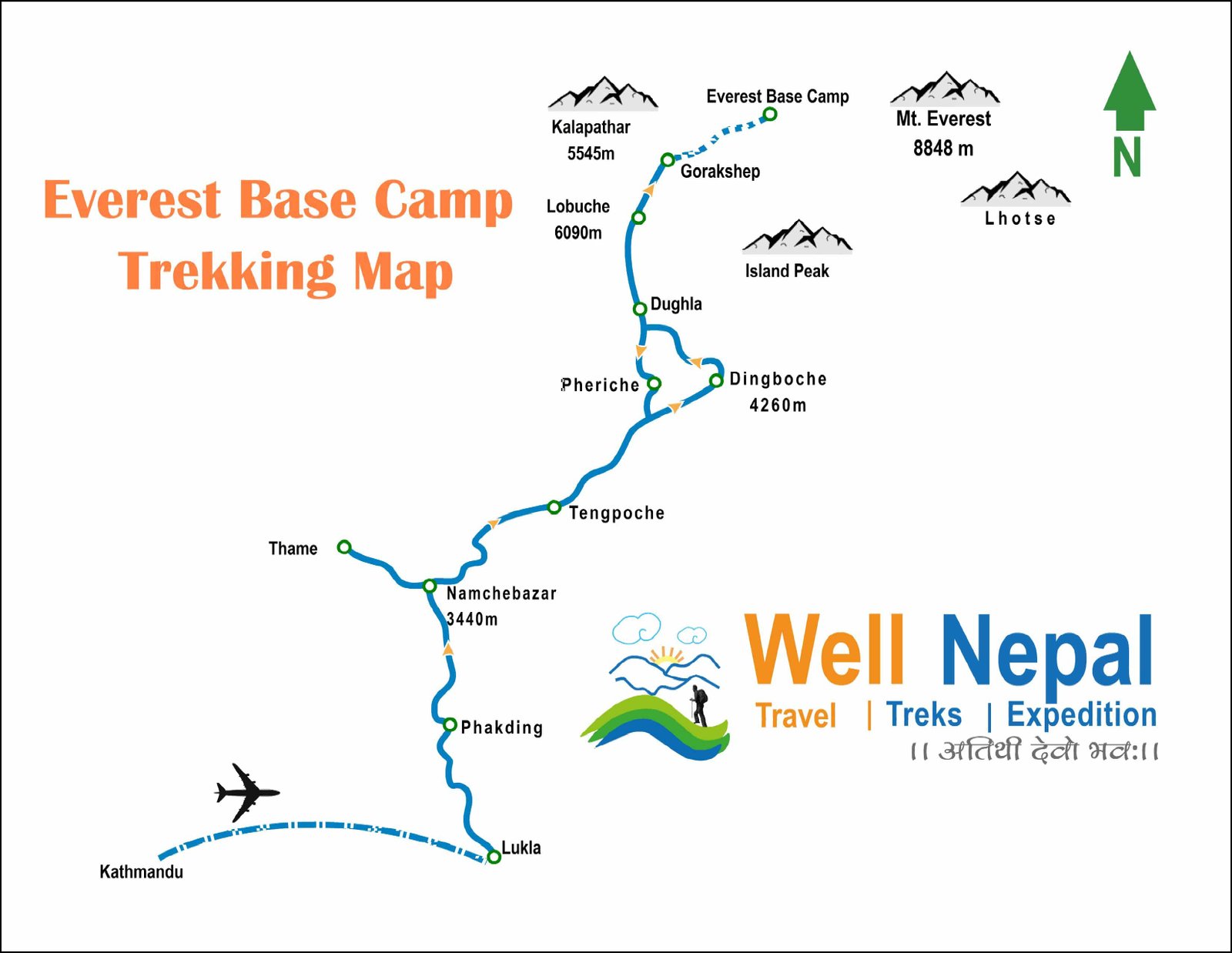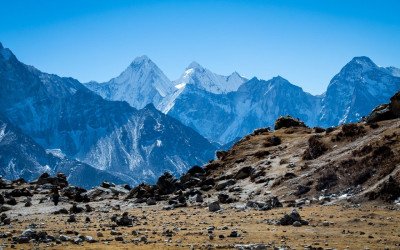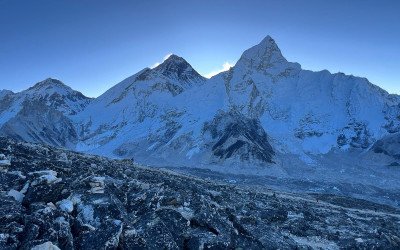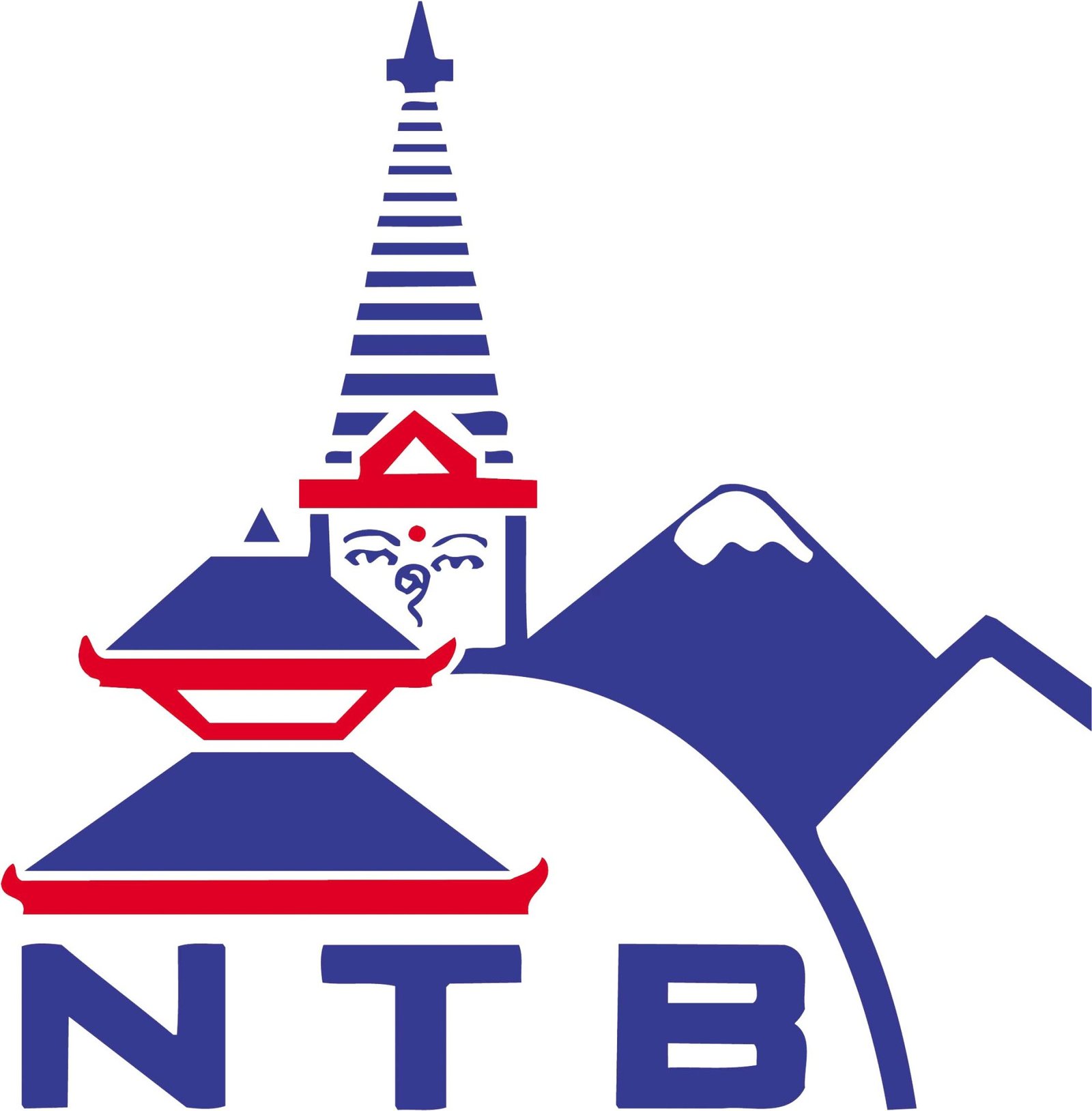- Registered Company
- More than Decade of Experience
- Customer Satisfaction is our motto
Trip Facts
-
Group Size1-15 pax
-
Max Elevation3860 m
-
GradeEasy
-
TransportationFlight
-
AccommodationHotel and Teahouse
-
Cost1300
-
Trip Length10 Days
-
Best MonthMarch, April, September, October
-
WIFIAvailable
-
Trip ModeHiking/Trekking
-
MealAll Meals on Trek
-
Trekking StyleHiking
-
Start FromKathmandu
-
End PointKathmandu
Outline Itinerary
Day 1: Arrival in Kathmandu and Transfer to the Hotel
Day 2: Flight from Kathmandu (1,400 m) to Lukla (2,860 m) & Trek to Phakding (2,610 m)
Day 3: Trek from Phakding (2,610 m) to Namche Bazaar (3,440 m)
Day 4: Acclimatization and Exploration Day in Namche Bazaar
Day 5: Trek from Namche Bazaar (3,440 m) to Tengboche (3,860 m)
Day 6: Trek from Tengboche (3,860 m) to Khumjung Village (3,790 m)
Day 7: Trek from Khumjung Village (3,790 m) back down to Phakding (2,610 m)
Day 8: Trek from Phakding (2,610 m) back up to Lukla (2,860 m)
Day 9: Flight from Lukla (2,860 m) back down to Kathmandu (1,400 m) or Manthali
Day 10: Departure from Nepal
Altitude Map
This Altitude Map shows highest alttitude you will trek to each day.
Group Cost
| Group | Cost |
|---|---|
| 1-1 pax | $1400 |
| 2-4 pax | $1200 |
| 5-8 pax | $1150 |
| 9-12 pax | $1100 |
| 12-15 pax | $1080 |
Package Included
- Accommodation in Kathmandu is provided with breakfast at a 3-star hotel
- Lodge accommodation during the trek
- Experienced English-speaking trekking guide throughout the trek
- All necessary permits
- Local transfers via private vehicle
- Kathmandu to Lukla and return flight tickets
- Porter for carrying luggage
- All applicable taxes
Package not Includes
- Nepal entry visa fees
- International or domestic airfare
- Compulsory travel insurance
- Alcoholic beverages, hot and cold drinks
- Lunch and dinner in Kathmandu
- Any additional expenses resulting from unforeseen circumstances such as flight cancellations, personal illness, strikes, political disturbances, etc.
Trip Overview
The Everest View Trek is one of the most amazing treks through the heart of the most significant region of Everest, which has the world’s renowned giants of mountains. It is for the traveller who wants to taste the Himalayas without the tall order of a physically challenging trekking adventure.
Beginning from the spectacular town of Lukla, where helicopters are famous, the trek initially moves through dense forests and then through Sherpa country. During the trekking, groups obtain astonishing views of giants such as Everest, Lhotse, or Ama Dablam that make all trip moments inappreciable, framing the magnificent artwork of the Himalayas.
The cultural side of the Everest View trek is also precious. It includes sightseeing at monasteries like Tengboche, where people can see daily Sherpa life with numerous ceremonies, all set against stunning views of the mountains.
Namche Bazaar is a colourful market street on the hills surrounded by white mountains. Built by the Sherpa people, it allows trekkers to experience the Sherpa culture and their hospitality during the trek.
Highlights of Everest View Trek - 10 Days Cost and Itinerary for 2025/2026
- Spectacular Mountain Views: Throughout the trek, enjoy unparalleled views of Everest, Lhotse, and other towering peaks from various vantage points.
- Cultural Immersion: Experience Sherpa culture firsthand, visit monasteries, interact with locals, and explore traditional villages along the route.
- Namche Bazaar: Discover the bustling Sherpa town of Namche Bazaar, renowned for its unique blend of cultural heritage and modern amenities.
- Tengboche Monastery: Visit the historic Tengboche Monastery, a spiritual centre offering panoramic mountain views and a serene atmosphere.
- Scenic Flight to Lukla: Begin your adventure with a thrilling flight from Kathmandu to Lukla, enjoying aerial views of the Himalayas and rugged terrain below.
- Sagarmatha National Park: Trek through the pristine landscapes of Sagarmatha National Park, a UNESCO World Heritage site renowned for its biodiversity and natural beauty.
Detail Itinerary
Arrival in Kathmandu and Transfer to the Hotel
At the airport in Kathmandu, Tribhuvan International Airport, you will be greeted by our tour agent, who will escort you to the hotels in Kathmandu. Kathmandu is Nepal's capital city, bringing an amalgamation of temples, markets, and streets full of activities.
Once you arrive in Kathmandu and check into your hotel, and maybe have dinner/lunch or order some food comprising some delicious Nepali local dishes, you can then move out and visit some of the sites such as Kathmandu Durbar Square, Swayambhunath stupa, commonly referred to as Monkey Temple or wander around the Thamel a famous tourist area known for its numerous shops and restaurants.
Lunch, Dinner
Hotel in Kathmandu
1400m
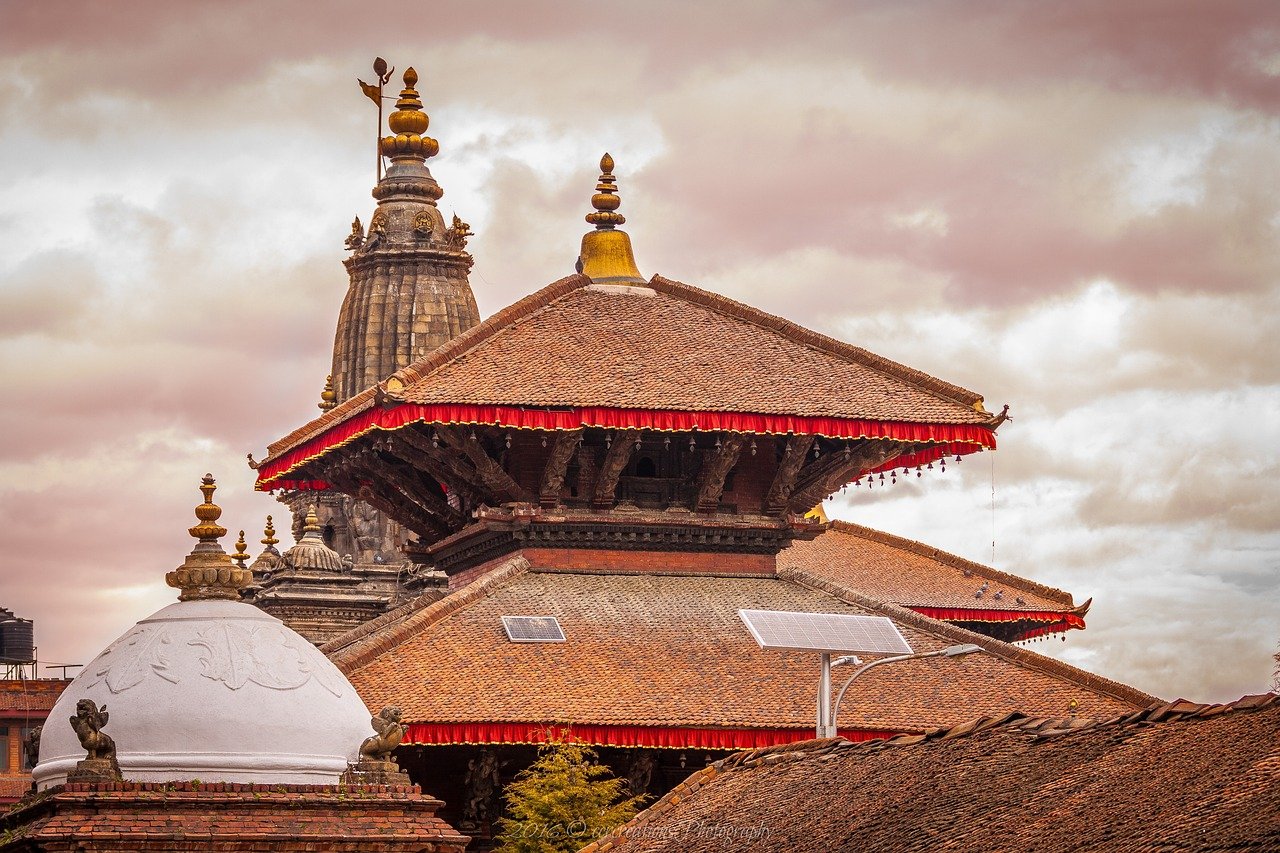
Flight from Kathmandu (1,400 m) to Lukla (2,860 m) & Trek to Phakding (2,610 m)
After waking up early, you will be on a spectacularly scenic flight from Kathmandu to Lukla, a small strip at such a high mountain altitude. The plane flight lasts 30 minutes and allows you to see the beautiful Himalayas and even Everest if the weather is fine.
When you arrive at Lukla (2,860m), the starting point of the trek, which is surrounded by the Everest region, you will be met by your trekking crew. The first day’s journey to Phakding (2,610m) is comparatively easy and passes through the colourful Sherpa settlements and the magnificent Dudh Koshi River.
On the way, you experience the local Buddhist civilization by walking in front of prayer wheels, mani stones, suspension bridges, and prayer flags. For the night, you will stay at a delightful tea house in Phakding - your first indication of the enchanting days ahead in the Himalayas.
Breakfast, Lunch, Dinner
Teahouse
2610m

Trek from Phakding (2,610 m) to Namche Bazaar (3,440 m)
Our journey today explores the Sagarmatha National Park, a bio-cultural reserve on the World Heritage list. Its slopes are relatively steep, although there are some slopes. Several suspension bridges over the gushing rivers, and the trail encircles several forests containing rhododendrons, pine, and fir.
As you ascend, you can view other snow-capped mountains, such as Thamserku (21801 ft) and Kongde Ri (20319 ft).
Namche Bazaar is one of the largest Sherpa towns in the Eder Everest region, and it will take about 5-6 hours of trekking to reach there. Namche is a lively place where most trekking parties are based. You can meet Sherpas and other locals, exchange products and news at the Wednesday market, and drink tea in small restaurants.
Here, you will spend two nights resting, familiarising yourself with the high altitudes, and window shopping around the town’s closely-knit zones with interesting nylon-aided shops selling trekking equipment, jewellery and other souvenirs, fruits, etc.
Breakfast, Lunch, Dinner
Teahouse
3440m
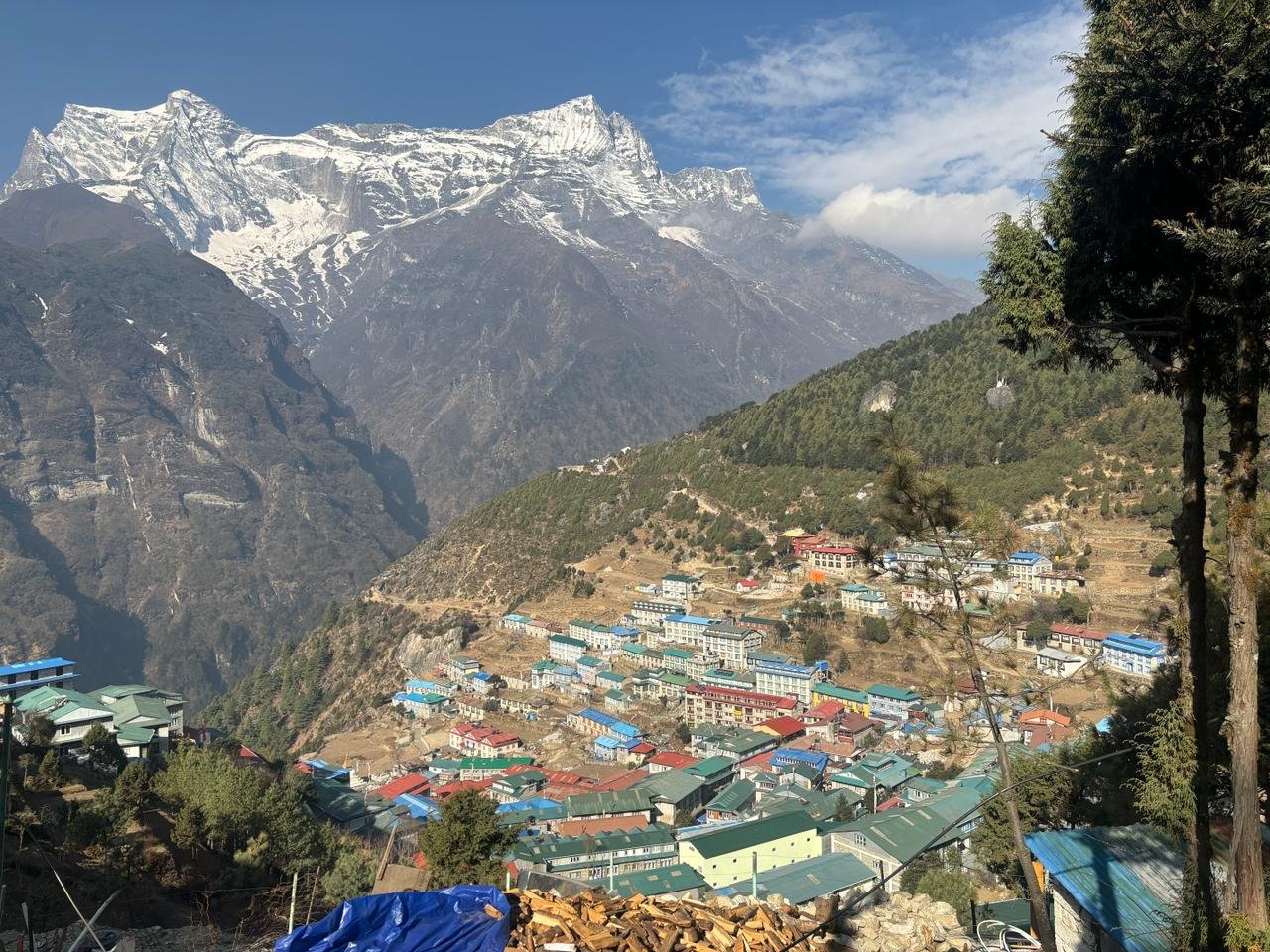
Acclimatization and Exploration Day in Namche Bazaar
It is a full day for acclimatization to minimize the impacts of Acute Mountain Sickness prevalent at high altitudes. You can take an hour's walk to the Everest View Hotel or Syangboche airport for the stunning view of the Hillary Mount Everest (8,848m.) & other Himalayan ranges.
In its stead, you can tour the Sherpa Cultural Museum to get acquainted with the diverse culture and history of Sherpas in the Mount Everest trekking business. Day 5 will be spent exploring Namche Bazaar, having a picnic lunch, and drinking some tea before returning to a tea house for the night.
Breakfast, Lunch, Dinner
Teahouse
3440m
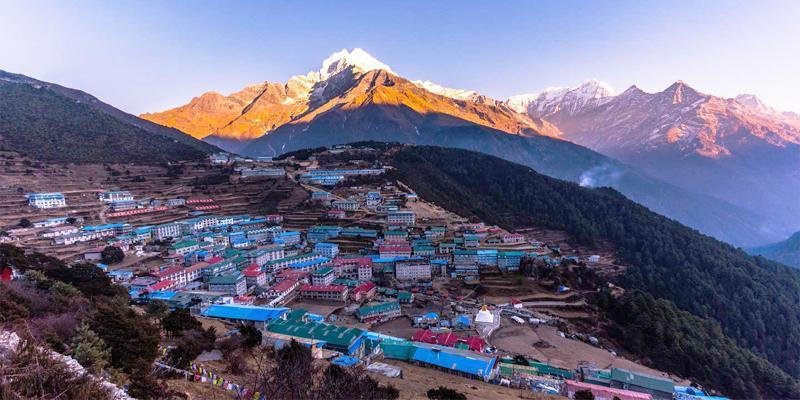
Trek from Namche Bazaar (3,440 m) to Tengboche (3,860 m)
Crossing Namche Bazaar, the track rises gently through the rhododendron and juniper field, where wildlife like musk deer and colourful Hill Thar are occasionally seen. Finally, there is Tengboche (3,860m), which offers a view of the Tengboche Monastery, the largest Monastery in the Everest area and a religious place for the Sherpa community.
Situated at a vantage point overlooking the world’s tallest peak, Tengboche provides exceptional views of Makalu, which measures 8,516m, and Ama Dablam, which measures 6,812m. Tengboche is a picturesque village beside the Dudhkoshi River, and beneath Ama Dablam is a vital monastery that offers a time for prayer in the evening and a beautiful night's stay in this region.
Breakfast, Lunch, Dinner
Teahouse
3860m
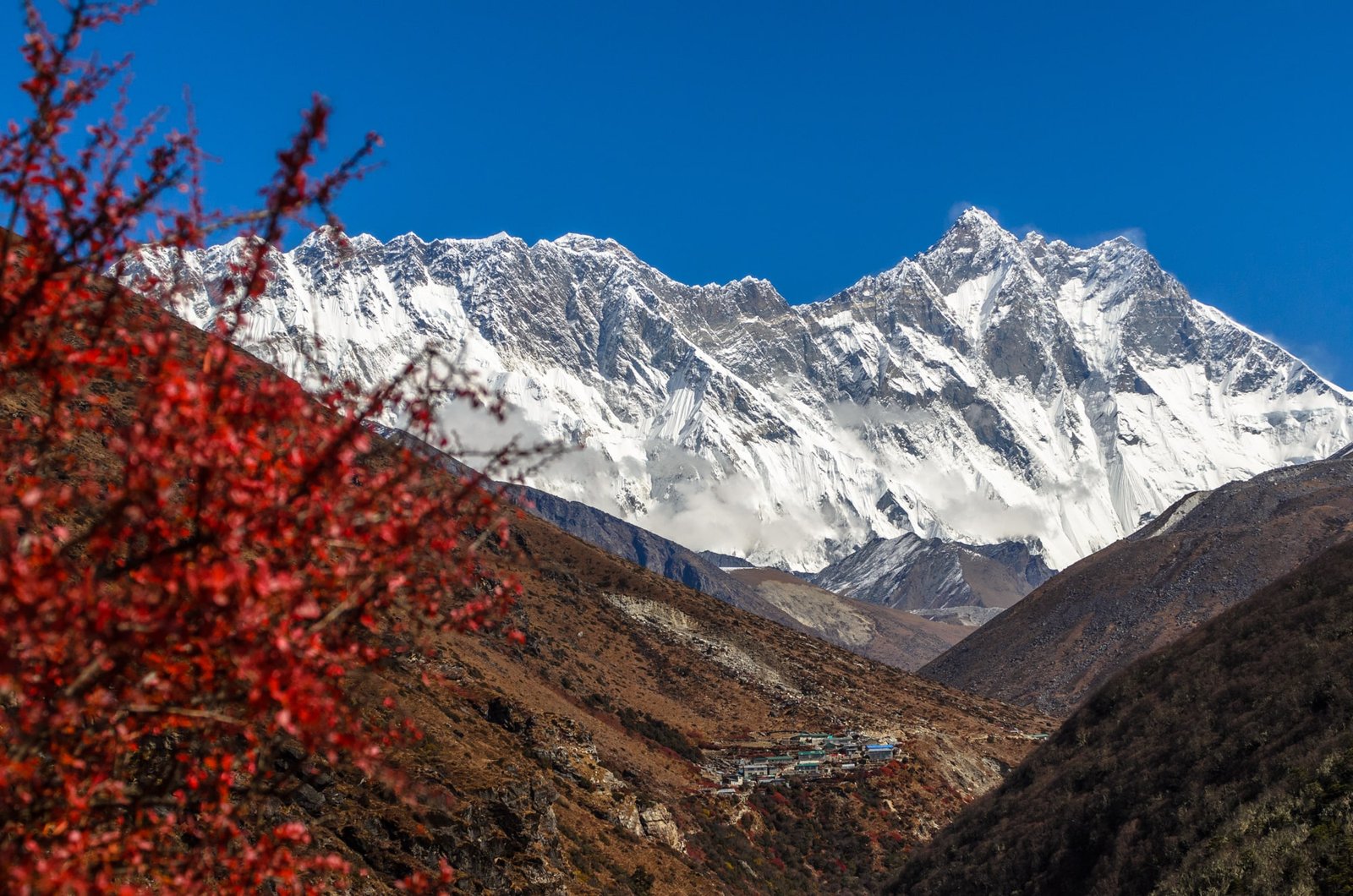
Trek from Tengboche (3,860 m) to Khumjung Village (3,790 m)
Leaving Tengboche, the path passes through airy pine forests and suspension bridges over the Dudh-Kosi River. There are several such villages on the trek, such as Deboche and Pangboche, where typical Sherpa houses are painted with prayer flags.
Following the same trail, you will come across the village of Khumjung (3,780m), which resides at the bottom of the mountain called Khumbila, the ‘God of the Khumbu’. One can visit the Hillary school here, which was established by Sir Edmund Hillary, and a monastery at Khumjung, which stores a scalp of the Yeti.
Feel the homely Sherpa welcome and breathtaking vistas of the great mountain before spending the night in a lodge known as the tea house.
Breakfast, Lunch, Dinner
Teahouse
3780m
Trek from Khumjung Village (3,790 m) back down to Phakding (2,610 m)
Today, to reach Phakding, you will retrace your steps with views of the Kvnj Tschugga re-visited as you walk down through the forested areas and cross high suspension bridges across the Dudh Koshi River. The descent is also an excellent opportunity for travellers to cast one final look at the beautiful landscapes of the Everest zone on the trip back to Phakding.
Arriving in Phakding is another successful accomplishment of your trekking adventure, and it is the perfect time to join your trekking crew and other trekkers, enjoy a delicious meal together, and share experiences of the day or the entire trekking experience.
Breakfast, Lunch, Dinner
Teahouse
2610m
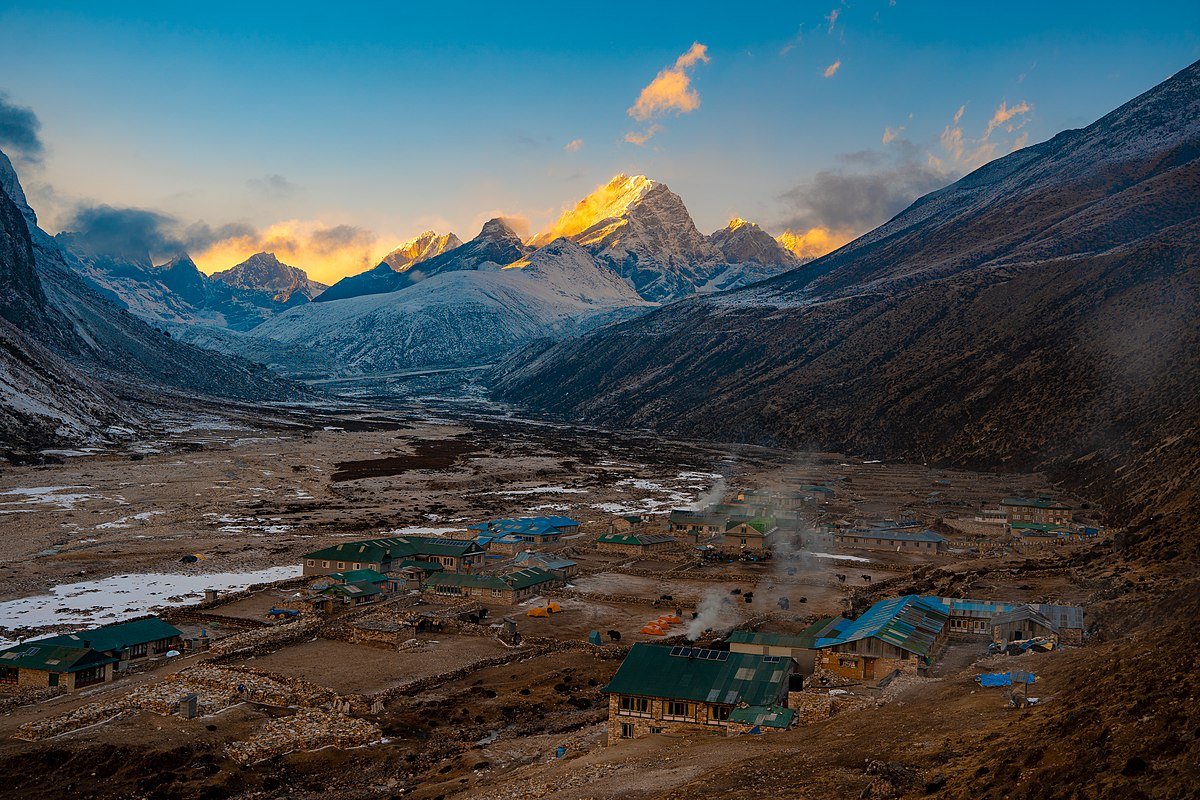
Trek from Phakding (2,610 m) back up to Lukla (2,860 m)
Your last day involves descending from the mountains back to Lukla, following the steps along the Dudh Koshi River as you did on the first day, and admiring the area's beauty on your way down. The trail provides a view into the pine and rhododendron-filled forests full of singing birds and crunching leaves.
The terraced fields and the peaks of mountains in the distance can be seen while approaching Lukla, and the reminisce of the trekking adventure is cherished.
On reaching Lukla, you part with your trekking staff, rest, and stay in the local tea house in Lukla, thinking of so many experiences and friendships you have encountered during the trekking period.
Breakfast, Lunch, Dinner
Teahouse
2860m

Flight from Lukla (2,860 m) back down to Kathmandu (1,400 m) or Manthali
Early in the morning, board a thrilling flight from Lukla back to Kathmandu or Manthali, which offers a bird's-eye view of the Himalayan peaks you've recently explored.
Upon arrival in Kathmandu, transfer to your hotel and enjoy leisurely exploring the city's cultural landmarks or indulging in last-minute souvenir shopping. Reflect on your Everest View Trek adventure, sharing stories and photos with newfound friends before preparing for your departure from Nepal.
Breakfast, Lunch, Dinner
Teahouse
1400m
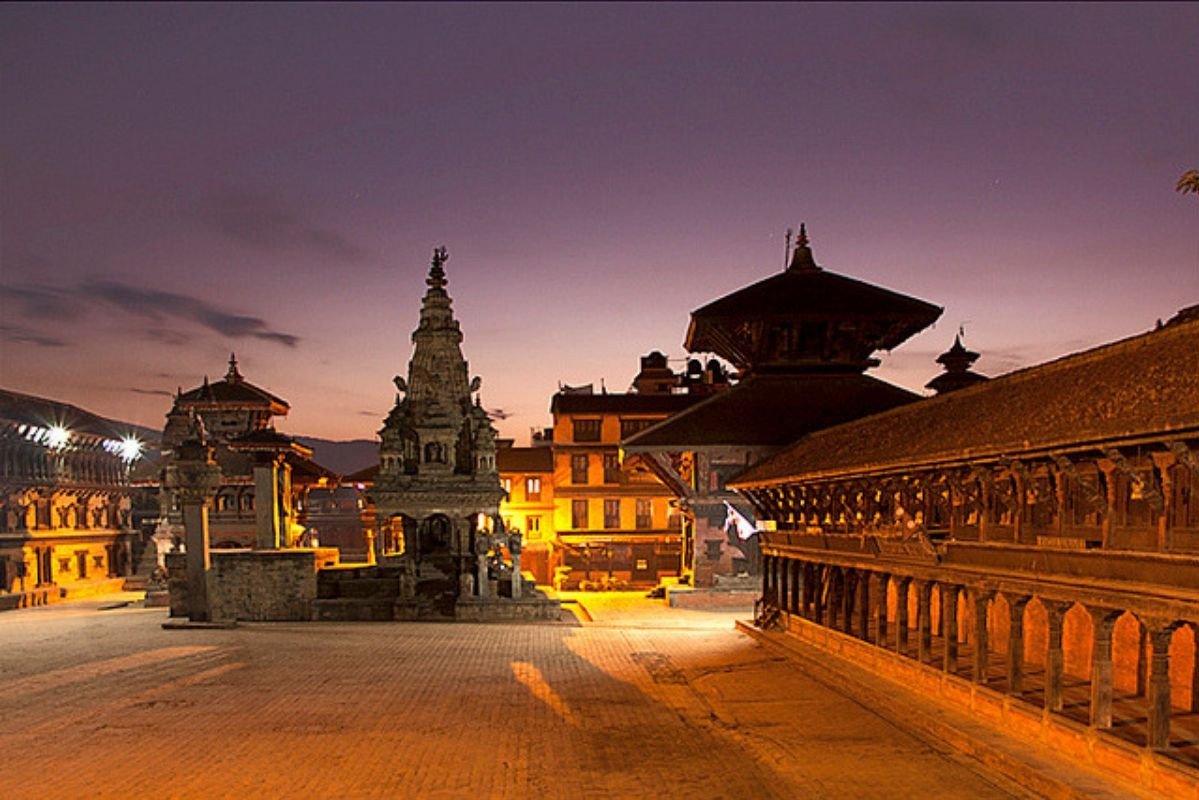
Departure from Nepal
After breakfast, relying on your flight schedule, enjoy some free time in Kathmandu before transferring to Tribhuvan International Airport for your onward journey. Bid farewell to Nepal, a land of majestic mountains, vibrant cultures, and warm hospitality, carrying cherished memories and a deep gratitude for the natural beauty of the Everest region.
Breakfast
N/A
1440m
Things need to know before departure
Frequently Asked Questions
Fixed Departure
| SN | Start Date | Trip Duration | Cost Per Person | Availability | Join Group |
|---|---|---|---|---|---|
| 1 | 2025-12-03 | 10 Days | USD 1200 | Available | Book Now |



